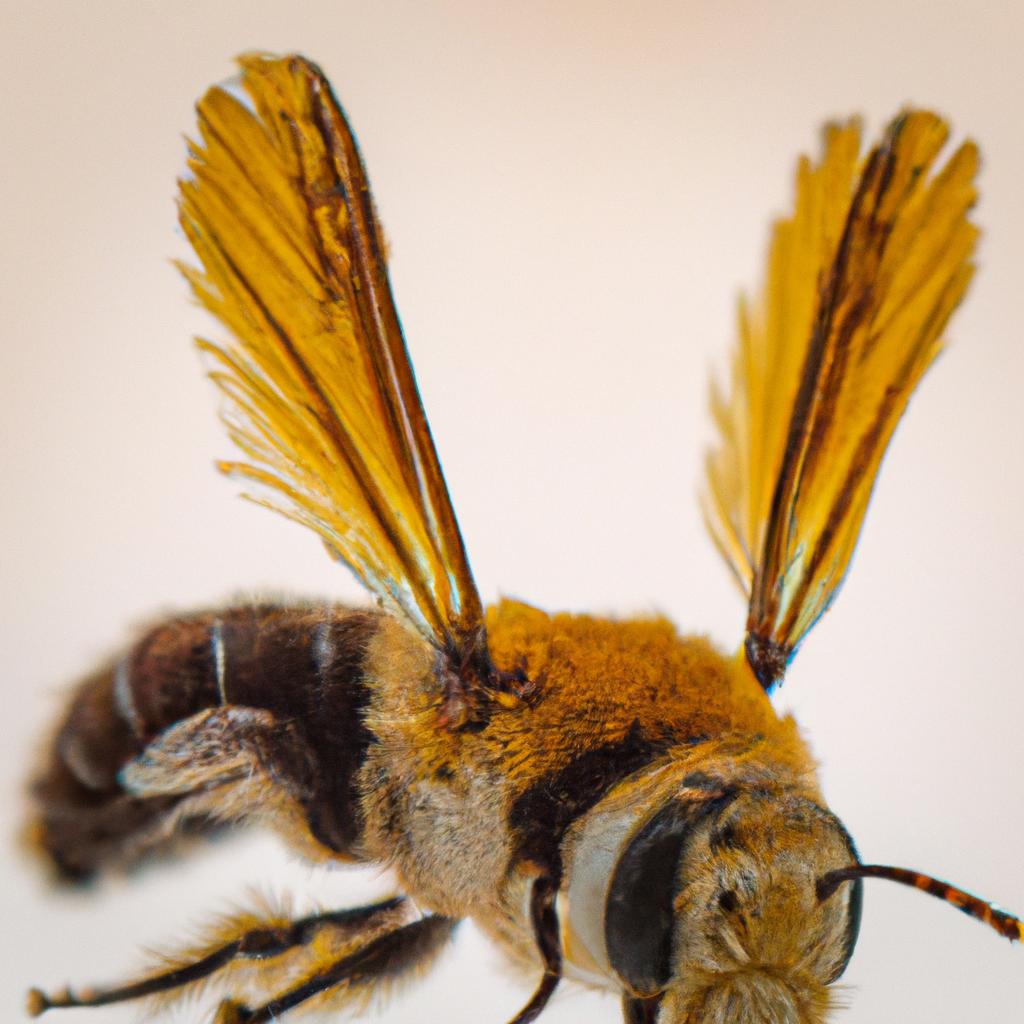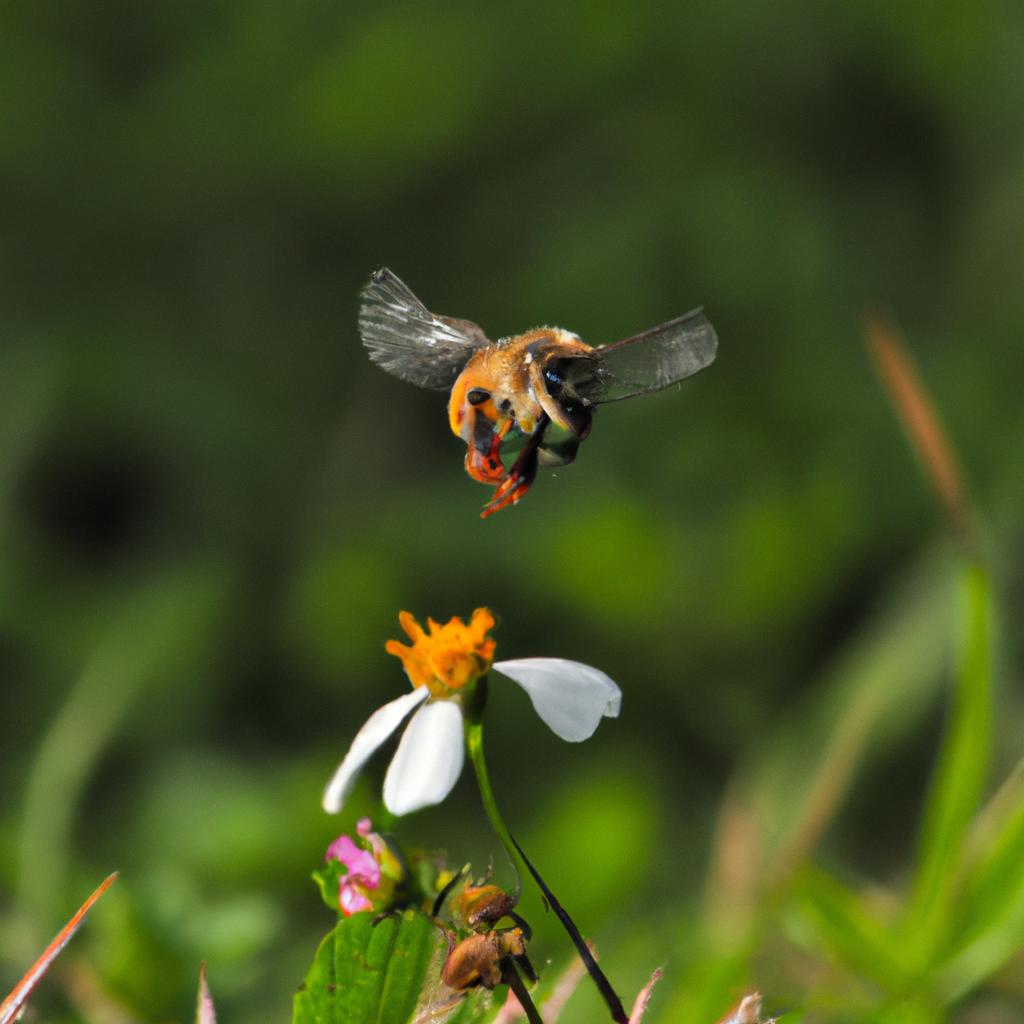Introduction

Honey bees are fascinating creatures that play an essential role in our ecosystem. They are known for their ability to produce honey, but they also contribute to pollination, which is vital for the growth of plants and crops. In this article, we will be exploring the anatomy of a honey bee, specifically their wings. We will be answering the question, “How many wings does a honey bee have?” and discussing the importance of honey bee wings.
Anatomy of a Honey Bee

Before we dive into the specifics of honey bee wings, it’s essential to understand the anatomy of a honey bee. Honey bees have three main body parts: the head, thorax, and abdomen. The head houses the bee’s eyes, antennae, and mouthparts. The thorax is where the wings and legs are attached, and the abdomen contains the bee’s digestive and reproductive organs.
Each body part of a honey bee has a specific function. The eyes help the bees navigate and find flowers, while the antennae are used to smell and touch. The mouthparts allow the bees to feed on nectar and pollen, and the legs are used for grooming and carrying pollen.
In the next section, we will be discussing the wings of a honey bee and their importance.
Wings of a Honey Bee
Honey bees have four wings in total, two on each side of their thorax. The wings are translucent and have a thin, vein-like structure. They are connected to the bee’s body by a small, flexible joint that allows the bees to move their wings freely. Honey bee wings beat at a rapid rate of approximately 200 beats per second, which is what allows them to fly.
The wings of a honey bee are essential for their survival. They use their wings to fly to flowers to collect nectar and pollen for their hive. Additionally, they use their wings to escape predators and to regulate the temperature inside their hive.
Number of Wings of a Honey Bee
Honey bees have two pairs of wings, which means they have four wings in total. The two pairs of wings work together to provide lift and stability during flight. The forewings are larger than the hindwings and are connected to the bee’s body by a series of hooks and grooves. The hindwings are smaller and are connected to the forewings by a series of hooks and membranes.
It’s important to note that not all bees have the same number of wings. For example, wasps and hornets have two pairs of wings, just like honey bees. However, some bee species only have one pair of wings, while others have no wings at all. The number of wings a bee has is determined by its species and plays a crucial role in its ability to fly and survive.
Function of Honey Bee Wings
Honey bee wings are essential for their survival. They use their wings to fly to flowers and collect nectar and pollen, which they bring back to their hive to make honey. The wings also help the bees regulate their body temperature by fanning the hive to cool it down or generate heat by shivering their muscles.
In addition to their importance in honey production, honey bee wings play a crucial role in pollination. When bees fly from flower to flower, they transfer pollen, fertilizing plants and allowing them to produce fruit. This process is vital for the growth of crops, and without honey bees, many plants would not be able to produce fruits and vegetables.
Conclusion
In conclusion, honey bees have two pairs of wings, bringing the total number of wings to four. These wings are essential for their survival and play a crucial role in pollination. Without honey bees, many of the foods we eat, such as apples, almonds, and blueberries, would become scarce.
As beekeepers and lovers of bees, it’s our responsibility to protect these pollinators and ensure their survival. By providing them with a safe habitat, planting bee-friendly plants, and avoiding the use of harmful pesticides, we can help honey bees thrive.
At BeeKeepinglove.com, we are committed to educating and supporting beekeepers and enthusiasts worldwide. Join us in our mission to protect and preserve these essential creatures.
